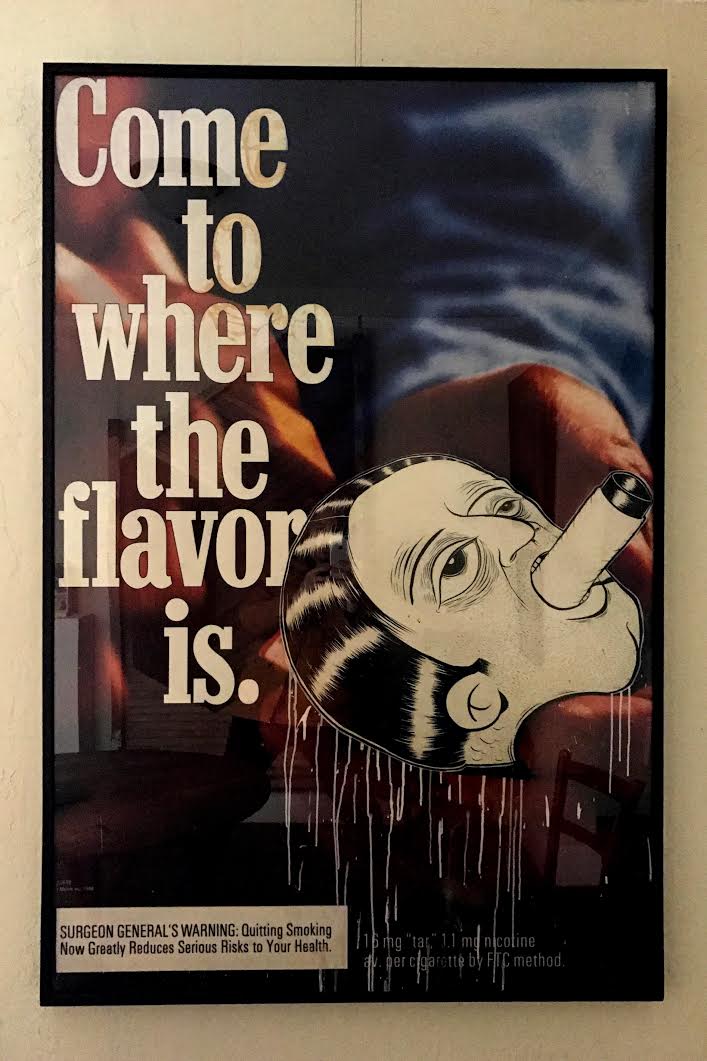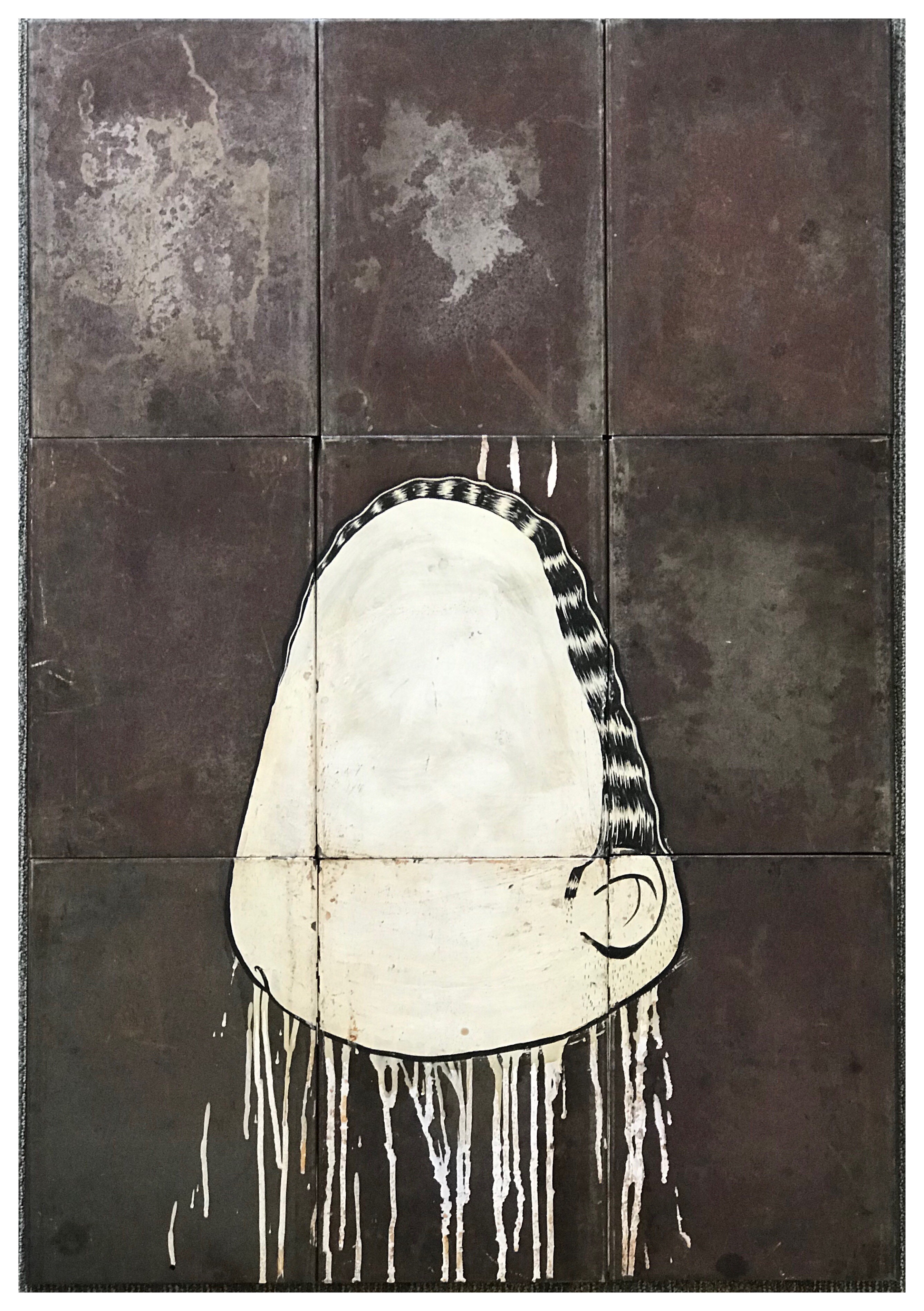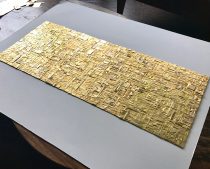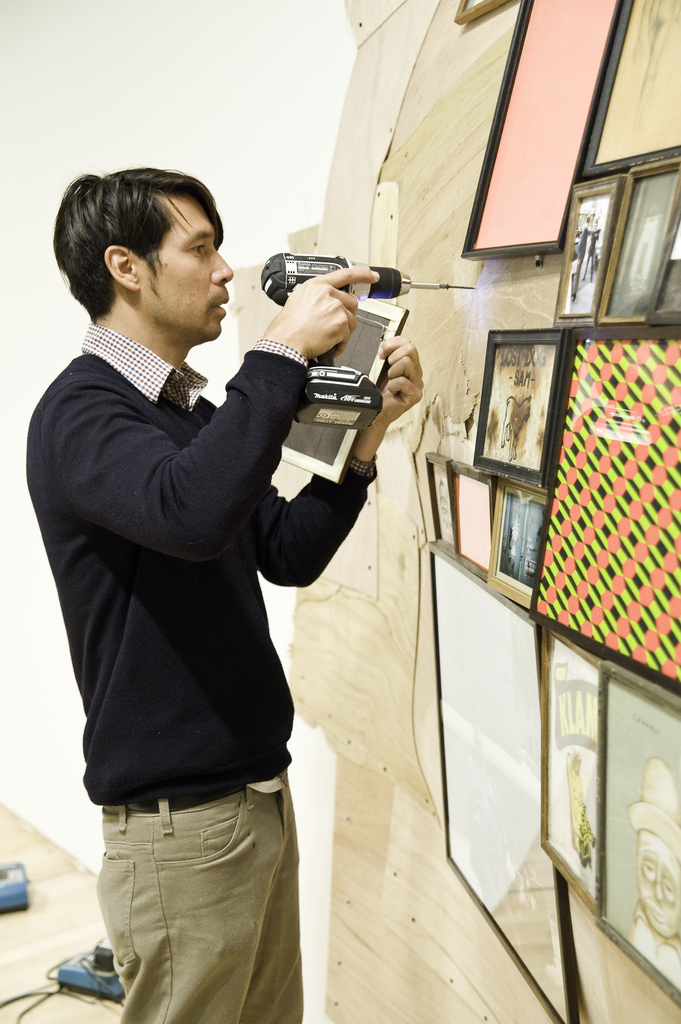first published in As It Ought To Be, September 6, 2012
Barry McGee. Photograph by Winni Wintermeyer for SFMOMA, 2010.
Crushing the Non-State!
Matt Gonzalez questions Barry McGee
Editors note: This interview took place at a secret location on York Street in San Francisco on January 18, 2006. It was edited a couple of weeks later in Wichita on February 4th.
Q: Let’s start off with an easy one – how would you describe your sexuality and the sexuality of your ideal lover?
A: I think I’m mostly gay but act straight when I need to. I sometimes think my tags are the sexiest things on Earth. As for an ideal lover, I have one, Lydia Fong.
Q: Many octogenarians have tips for how to stay young as they get older – so a related question – how do you maintain street credibility in the midst of your success?
A: Um…I try to surround myself with kids that are making a lot of noise on the streets. Also I lost my street credibility about 15 years ago so credibility and respect are both concepts that have become somewhat foreign. I’m a bit weary of the idea and preconceptions of success. I mean a etch tag on a Nordstrom window has a certain feeling of achievement and success also.
Q: Most artists return to familiar images or signature elements in their work as they go from one work of art to another. Are you comfortable with that or do you try to unlearn aspects of your style that have become safe for you?
A: This is a bit tricky. I think a person can develop a style that people become familiar with and can recognize at 65 mps on the freeway. In a gallery setting it becomes a bit more safe and controlled. I have been in a rut for sometime with certain images, but have buried others. I am fascinated right now removing images altogether.
Q: Do you think success in the art world is accidental like getting hit by lightening – or is it based on talent or something else? What advice do you give to young artists trying to find their way in galleries and on the street?
A: I’m uncomfortable with this society’s idea of success. Look at commercial radio or what I’ve heard is successful television. If that is what is success I want nothing to do with it. I believe it is a bit accidental and luck. I’m not quite comfortable with the notion of doing graffiti or street art or whatever it’s called for two months then go marching into the galleries, trumpeting success. Like I mentioned before, success is defined by the individual not by the art world or gallerist. How do you define success? As for the younger generation, I would say build with a group of friends a world that no one has ever seen then destroy it.
Q: Do you care what young people think of your work? Do you want to stay connected with or relevant to the next generation of graffiti writers?
A: Yes, this is very important to me what young people think. At the same time I would like a 65 year old to understand and appreciate my work also. The next generation of kids doing graffiti and whatever should make work that confuses and upsets the older generation of writers. I applaud the outcast in the subculture, stirring the pot of crap and making the elder generation uncomfortable.
Q: When do you know a work of art is finished? Have you ever looked at a piece you did years ago and wished you could do more on it?
A: Finished is when its smoldering in a pile of embers. I myself have trouble with finishing. It can be ten minutes before an opening and then I will understand the meaning of finished. I have many pieces from the past that I would buy back and burn to the ground – whereas there’re many things on the street that I wish were still running. I recently had the opportunity to rework some pieces I did from the mid nineties, that belong to the SFMOMA. It had so many pieces that needed reworking. I would sneak pieces into my bag at night and returned them the next day finished. Until we meet again.
Q: Does the role of the artist change during wartime?
A: I’m not sure what wartime means anymore. Most of my life we, or our country, has been involved in some covert activities and meddling in other countries. I was in high school during Reganomics. Wartime is constant as far as I know it. And rocks have been thrown as long as I can remember.
Q: Does your daughter Asha influence your work? Do you ever watch her draw? Take ideas from her?
A: Yes. She pops and deflates the bubbles and complexities of both the art world and life. The eye and hand are at the purist they will ever be in both directness and complexity. Kids are fantastic for creative blocks.
Q: How do you think you’ll respond when your teenage daughter comes home in police custody after crushing the city – in the way you have?
A: Okay, this will come up. I can only imagine the political landscape at that point, but I hope she will be on our team. If not, she will need to post her own bail. Ray Fong Bail Bonds will certainly be used.
Q: Hey, maybe you’ll finally meet Lydia as a result!
A: I’m already married to her, Peggy Honeywell, and Clare Rojas.
Q: One final question, what will we do after the state is smashed?
A: We will swim in our clean ocean and drink water from our unpolluted streams – then crush the non-State, Matt. Smash the system!
The end.

Barry McGee, Untitled, acrylic on hinged wood panel, 96 x 96 inches, c. 1997.

Barry McGee, Untitled, bus shelter advertisement, 44 x 66.5 inches, 1996.

Photograph of a Barry McGee graffiti painting on a Marlboro cigarette bus shelter advertisement, “Come to where the flavor is”, near the San Francisco Museum of Modern Art on 3rd Street near Howard Street (servicing the Stockton/Union 15, 30, 45, & 91 bus routes), 1996. Photographer unknown.
Barry McGee, Untitled, hand painted spray can, 3 x 7 inches, c. 1997, exhibited at Alleged Gallery, “The Independents”, NYC, 1997.

Barry McGee, Untitled, oil on nine metal panels, 39 3/8 x 27 inches, 1995, exhibited at Acme Gallery, “Post No Bills” & “Acme Custom”, San Francisco, 1995 & 1996.

Barry McGee, This was No Ordinary Pee-Cup, graphite & marker on paper (wood & steel letterpress furniture artist frame), 9 x 13 inches, 1994, exhibited at Southern Exposure, San Francisco.

Barry McGee, Untitled (car), graphite, felt-tip marker, ink & gouache on paper, 7 x 5 inches, 1993.

Barry McGee, Untitled (Face), acrylic on paper with found frame, 12.5 x 9.5 inches, 2009, exhibited at Prism Gallery, “mindthegap”, Los Angeles, 2009-2010.
 Barry McGee, Untitled (hourglass geometric pattern), gouache on paper, 8.5 x 11 inches, 2009, exhibited at Baer Ridgway Exhibitions, “Paper!Awesome!”, San Francisco, 2010.
Barry McGee, Untitled (hourglass geometric pattern), gouache on paper, 8.5 x 11 inches, 2009, exhibited at Baer Ridgway Exhibitions, “Paper!Awesome!”, San Francisco, 2010.

Barry McGee, Untitled, gouache & latex on paper, 8.5 x 10 inches, 2007, exhibited at California Modern Gallery, “Arcadia 2007: Artist Celebrate Trees”, San Francisco, 2007.

Barry McGee, Untitled [crawling figure], acrylic on wood, 12 x 19.75 inches, c. early 2000s.

Barry McGee, Untitled, gouache on paper, 11 x 9 inches, 2020.



Cute.